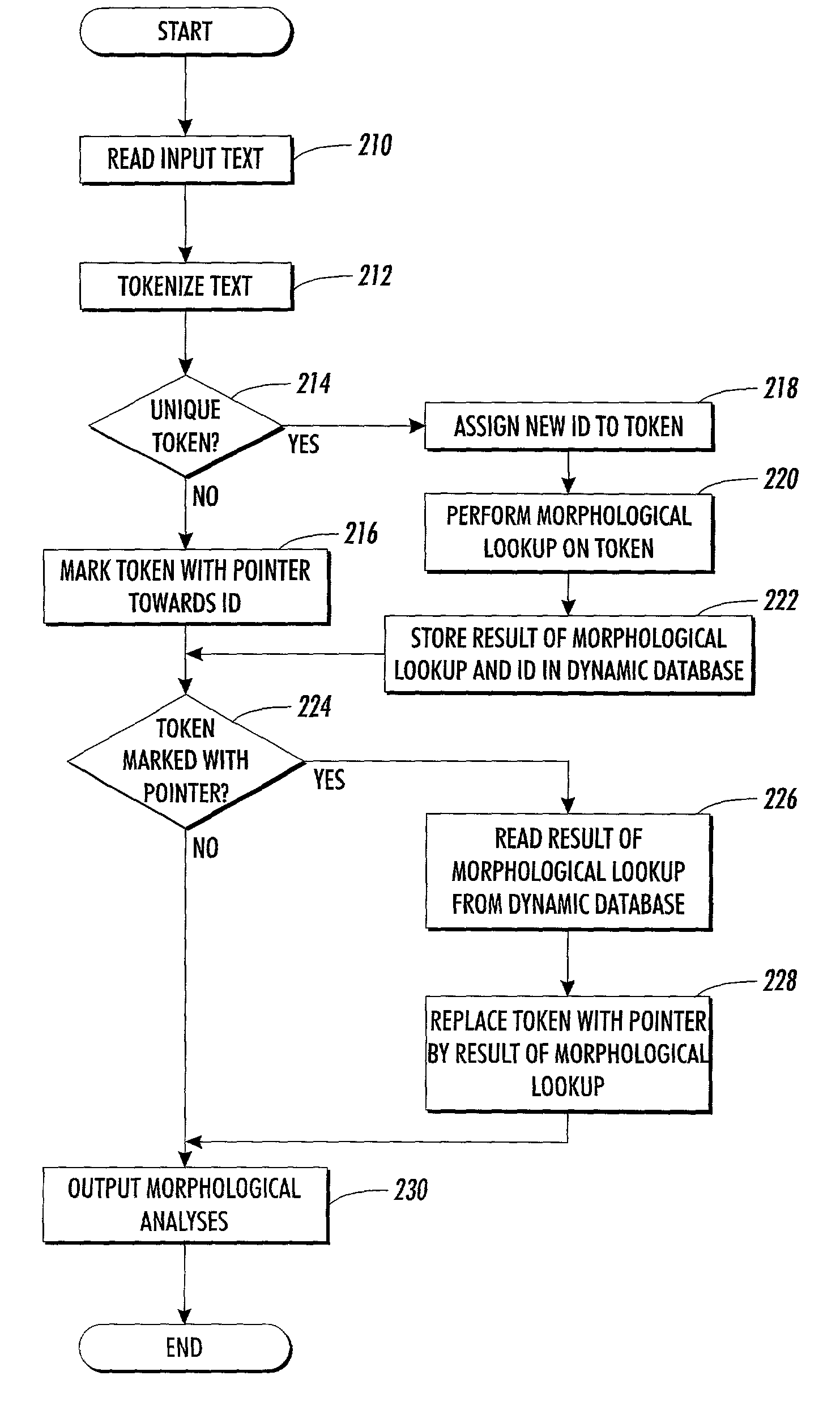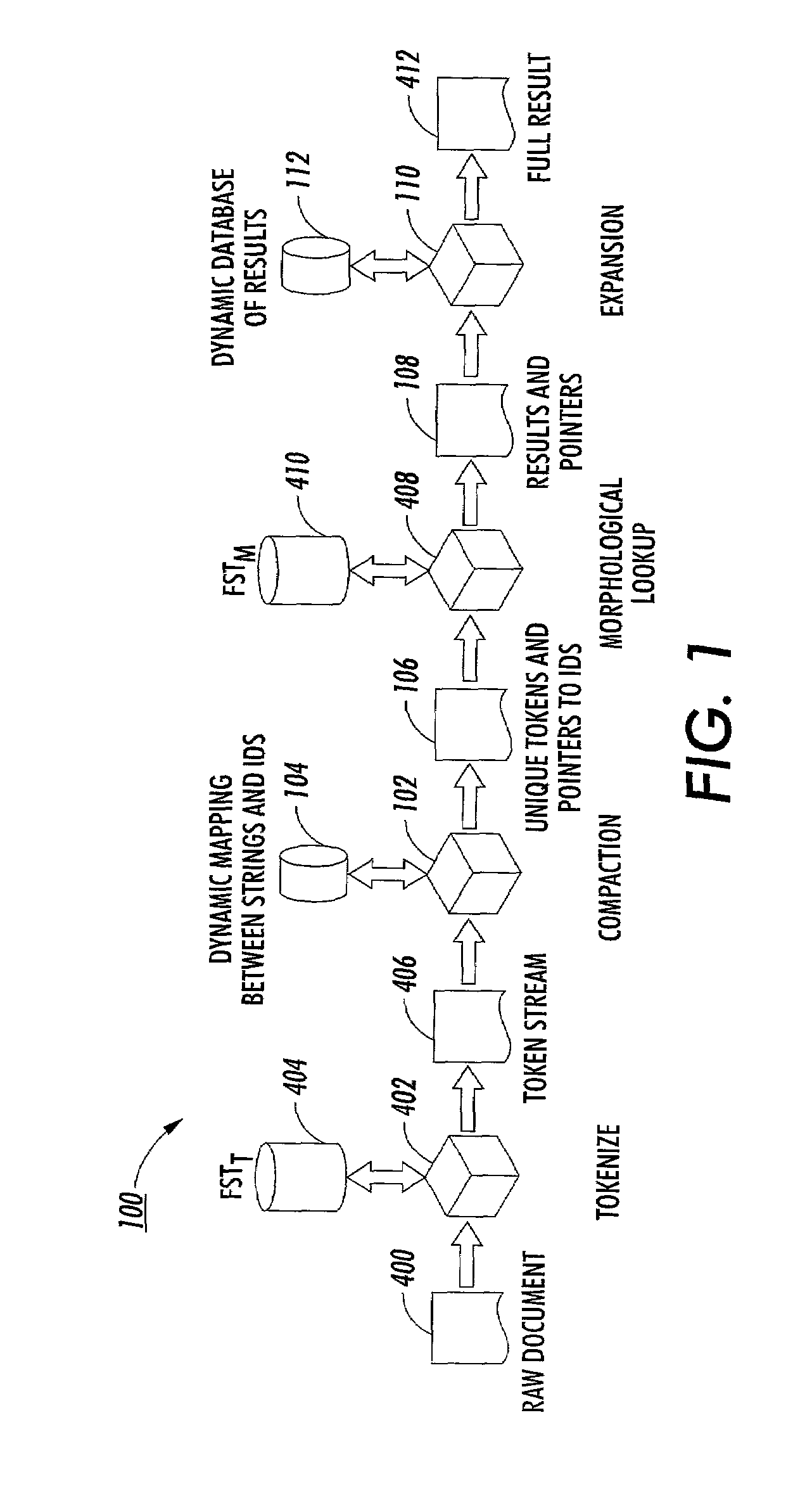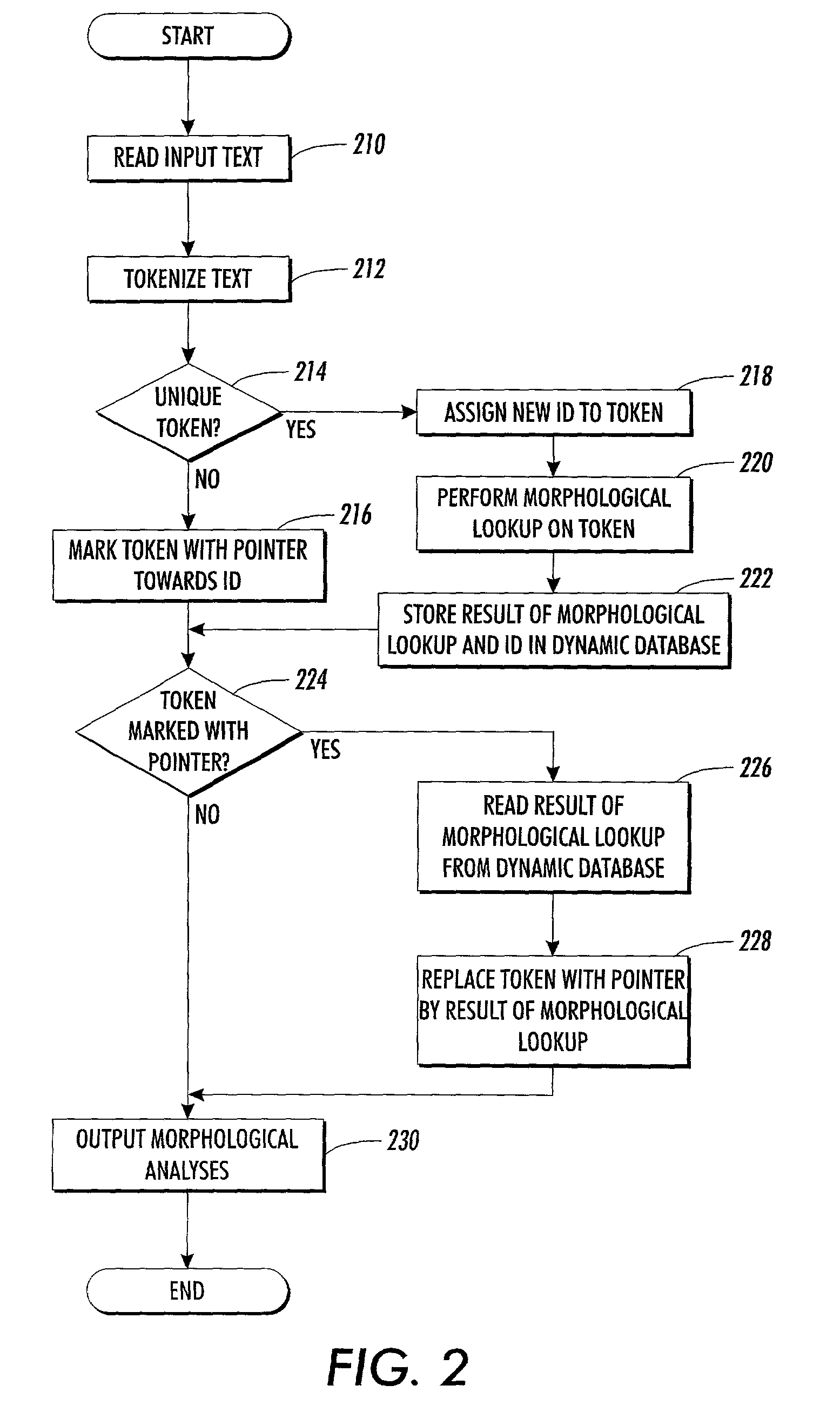Method and system for accelerated morphological analysis
a morphological analysis and accelerated technology, applied in the field of morphological analysis methods and systems, can solve the problems of much slower analysis of tokens against morphological transducers b>410/b>, and achieve the effect of reducing processing time and looking up tim
- Summary
- Abstract
- Description
- Claims
- Application Information
AI Technical Summary
Benefits of technology
Problems solved by technology
Method used
Image
Examples
Embodiment Construction
[0020]Referring now to the drawings, FIG. 1 illustrates a block diagram of a system 100 for performing morphology analysis of a natural language document. As known in the art, the raw document 400 is first tokenized by the tokenizing tool (i.e., tokenizer) 402, whereby a token stream 406 is created. In order to avoid a repeated morphological look-up of recurring tokens, the system 100 comprises a pre-processor 102 that performs a compaction of the token stream 406 by checking for each incoming token, whether it has already been seen earlier in the stream of tokens 406. Words that have been seen before, namely the so-called unique tokens, are marked with a unique identification (ID) that may for example be numerical, so that they need not be processed again by the morphological look-up 408. The morphological look-up tool 408 used at XRCE has a built-in mechanism to copy tokens that already carry an annotation over to the output stream. The compaction unit 102 also communicates with t...
PUM
 Login to View More
Login to View More Abstract
Description
Claims
Application Information
 Login to View More
Login to View More - R&D
- Intellectual Property
- Life Sciences
- Materials
- Tech Scout
- Unparalleled Data Quality
- Higher Quality Content
- 60% Fewer Hallucinations
Browse by: Latest US Patents, China's latest patents, Technical Efficacy Thesaurus, Application Domain, Technology Topic, Popular Technical Reports.
© 2025 PatSnap. All rights reserved.Legal|Privacy policy|Modern Slavery Act Transparency Statement|Sitemap|About US| Contact US: help@patsnap.com



